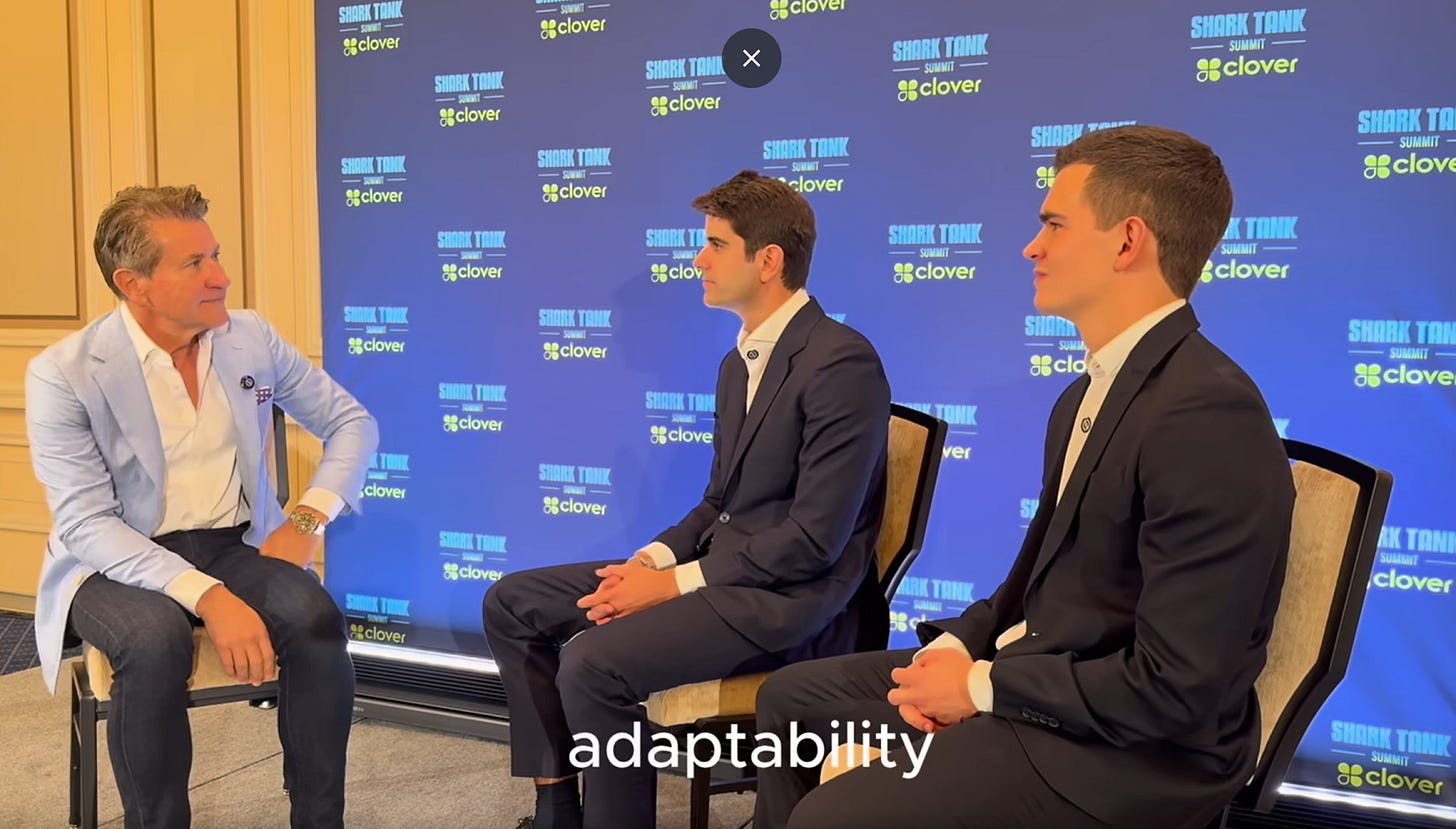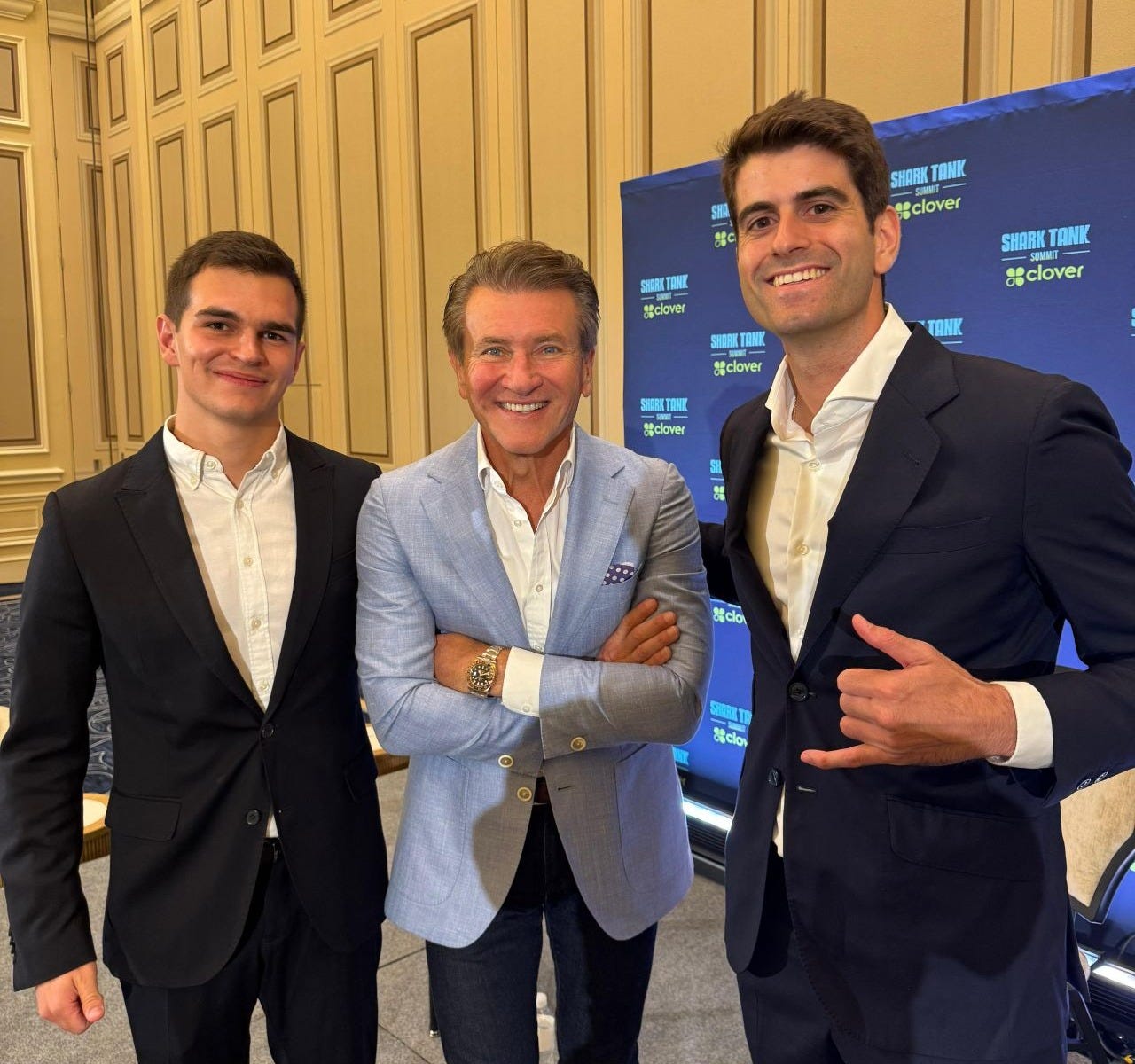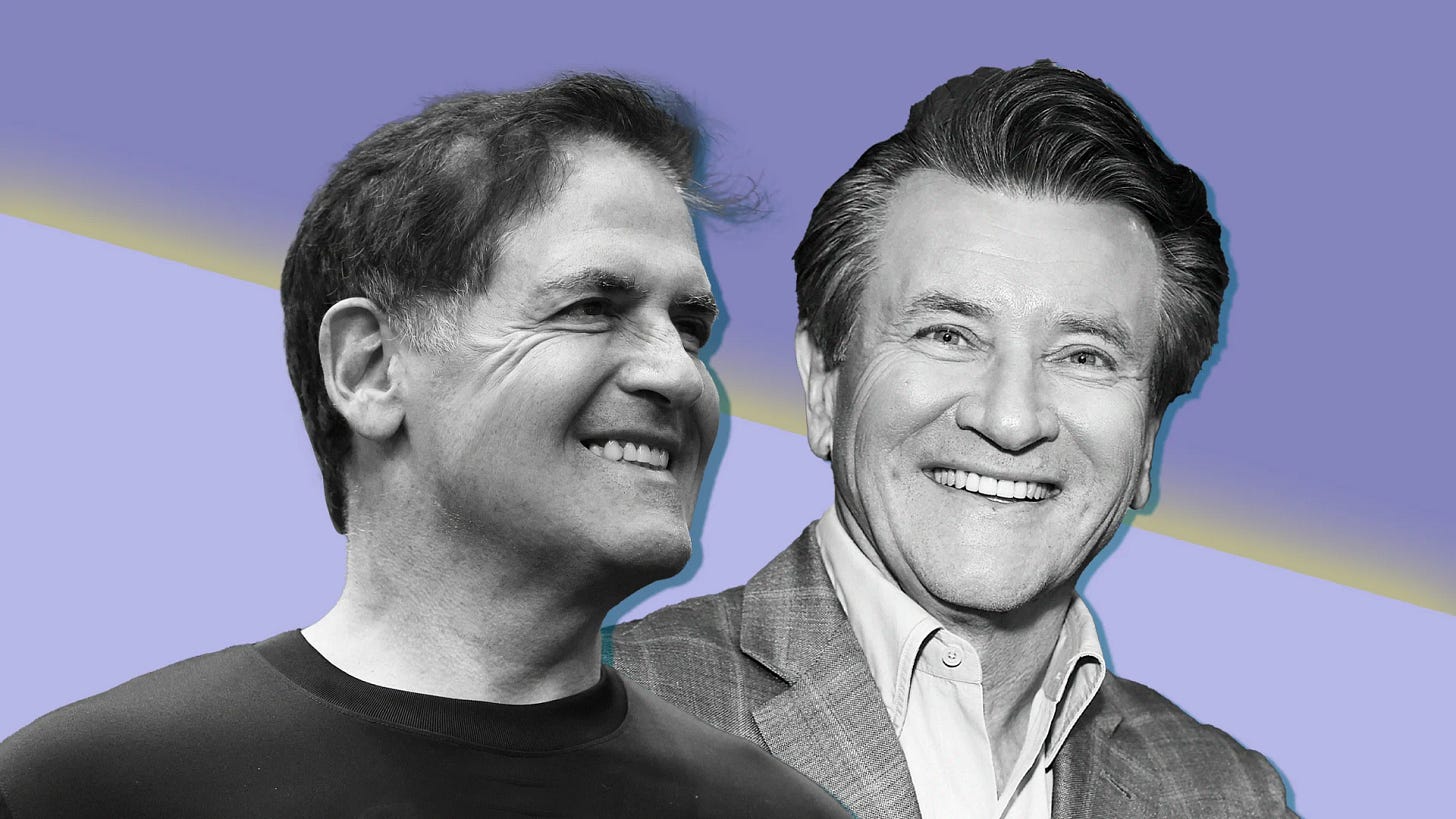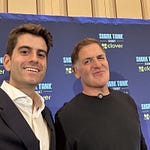Yesterday I sat down with Robert Herjavec, the billionaire entrepreneur and Shark on Shark Tank. His story is extreme even by startup standards.
He arrived in Canada as a child refugee with his family, carrying one suitcase and just $20.
Today, he’s still active in tech, media, and investing, with a net worth estimated near $600M.
In today’s newsletter, you’ll get:
How to Build a Moat for an AI Business
How to Avoid AI Taking Your Job
How to Pitch Your Startup
What a Shark Looks for in Founders
What Robert Would Build Today
How to Make Money
How to Leverage Media to Scale
PREMIUM ACCESS ONLY: What I’ve learnt personally from hanging out with Robert Herjavec
Watch the behind the scenes here
Brought to you by founderpath - the AI VC
Founderpath just raised a $145M fund to wire SaaS founders up to $4M in under 48 hours:
Connect your SaaS metrics (Stripe, Profitwell, Chargebee…).
Founderpath generates your SaaS Credit Score.
Unlock non-dilutive capital, no board meetings or personal guarantees.
1) How to Build a Moat for an AI Business
“AI is the simplification of every business process. If you are a startup today and you are not using AI for the fundamentals, you are going to fail. But because AI lets anyone copy almost anything, it is harder than ever to stand out. That is why branding, marketing, and communication are even more valuable today.”
Robert frames AI as table stakes for operations but also as a threat to product moats. If basic workflows become cheap and fast for everyone, then feature parity arrives quickly.
In that world, differentiation shifts from what the software does to the story around it, the community that carries it, and the distribution that keeps it in front of buyers.
Robert invests time and capital into exposure that carries credibility at scale. A solid brand, appearance on mainstream media, ads and a consistent public narrative create a brand that survives product cycles.
The same logic is visible in enterprise software where the perceived category leader often converts more pipeline than the technically best product.
2) How to Avoid AI Taking Your Job
“AI isn’t a negative. It’s a positive. 100 years ago, people broke their backs in factories to build machines. Now machines build machines — and nobody misses those jobs. 20 years from now, nobody will miss low-level admin jobs either. If you’re in that role, you’ve got to take responsibility to upskill your skills.”
Robert doesn’t see AI as a threat, but as the next cycle of progress.
Just like factory work gave way to machines a century ago, low-level admin work will disappear and nobody will miss it.
The people who stay relevant are the ones who upskill, taking responsibility to move up the value chain instead of fighting the shift or complaining about it.
3) How to Pitch your Startup
“Before you sell me on your product, you need to sell me on yourself. On Shark Tank, we do not know anything about the founders until they walk through those doors. The biggest mistake is to launch straight into the product pitch.”
The difference between a pitch that dies and one that gets funded isn’t the spreadsheet. It’s the human connection created in the first seconds of contact. .
Robert told us he screens for signals that indicate someone will be a reliable partner under pressure. Calm delivery, clarity of motive, and the ability to make someone care in a short window show up as lead indicators for execution quality.
4) What a Shark Looks for in Founders
“The number one trait we look for in founders is adaptability. Forecasts change. Markets shift. Competitors emerge. The great founders are not the ones with the perfect plan. They are the ones who can adapt when everything changes.”
Adaptability is without doubts the trait Robert values most.
Plans break, markets shift, competitors appear. The founders who survive are the ones who re-plan quickly without losing speed or morale. He looks for leaders who change course mid-process, cut losses fast, and don’t cling to yesterday’s story when the data disagrees.
5) What Would Robert Herjavec Build Now
“The real opportunity is in infrastructure. Phase 1 was consumer apps like ChatGPT and Grok. Phase 2 is vertical applications in areas like legal and nursing. Both get crowded and commoditized. The data infrastructure layer is where long term value sits. It is not sexy, but companies like Databricks and Snowflake prove it. That is why Mark Cuban and I are investing in AI infrastructure.”
Robert Herjavec believes both AI consumer apps and vertical applications will get crowded and commoditized.
The real, lasting opportunity sits in the data infrastructure layer: the data, governance, and pipelines that everything else runs on.
It’s not flashy, but companies like Databricks and Snowflake show where the compounding value builds. That’s why he and Mark Cuban are placing bets there.
They look for businesses that sell rails and pipes, not only end user interfaces. Then reward founders who know their buyer in data, security, and compliance teams, and who can speak about total cost of ownership rather than just features.
6) How to Make Money
“The hardest thing in life to build is capital. You can make income working for someone. You can make a great salary. After taxes, especially in places like California, there is not much left. That is why you make a decision early in life: which pain is greater for you. The pain of being poor, the pain of regret, or the pain of working 20 hours a day.”
Robert frames the path to generating wealth as a choice between pains. Those pains could be living poor, living with regret, or working relentless hours.
For him, the greater pain was being poor. So he took that exact pain and turned it into fuel that pushed him through years of failure, rejection, and uncertainty.
6) How to Leverage Media to Scale
Robert’s view on scaling is clear. Content is the engine, so if it’s working, keep the cadence, consistency compounds.
Traditional media still matters because it gives credibility that online reach alone can’t create. And most importantly, attention needs to convert into products. Fame might open doors, but what builds wealth is a scalable product and, eventually, an exit.
PREMIUM ACCESS ONLY: 5 things I’ve learnt personally from hanging out with Robert Herjavec
Check it out with the free trial (no strings attached), or jump straight into premium if you’re ready for the full scoop👇
Other resources you’ll be able to access with PMF’s premium subscription:
The 12 Tactics Behind Lovable’s Insane Growth to $50M ARR
How ElevenLabs Grew From $0 to $200M ARR in 2 Years + Their Pre-Seed Deck
Listen to this episode with a 7-day free trial
Subscribe to Product Market Fit to listen to this post and get 7 days of free access to the full post archives.


















